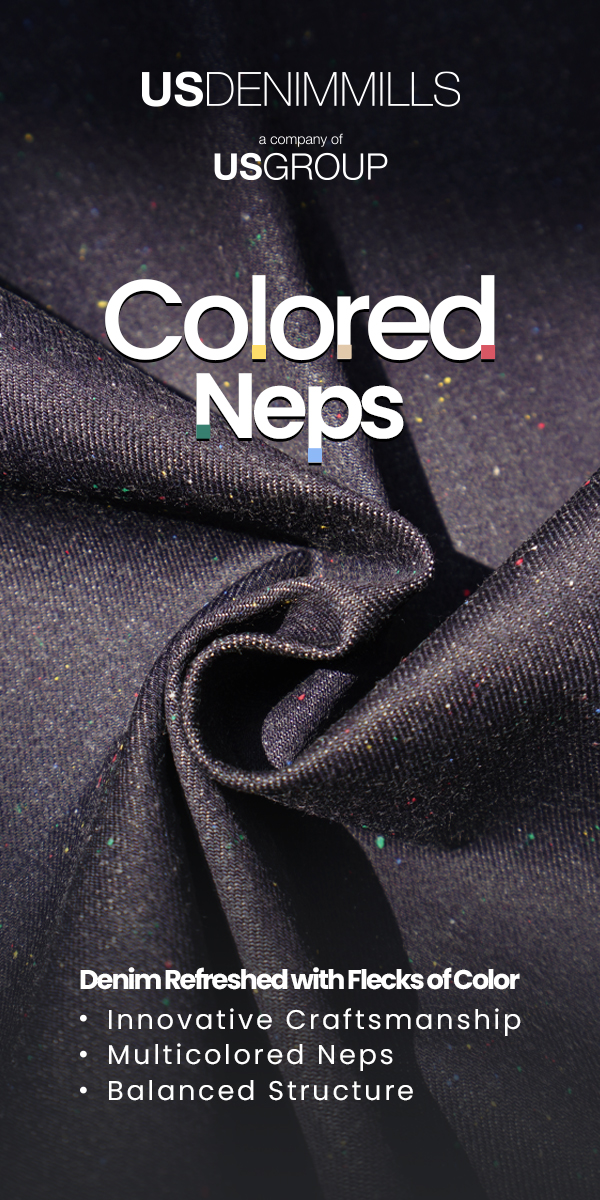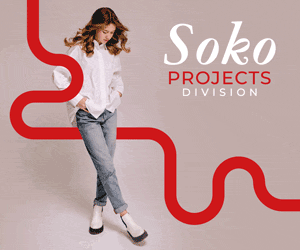Fresh pearls in Shanghai

Ahead of its thirtieth anniversary this August, Intertextile Shanghai Apparel Fabrics still knows how to draw a crowd.
The spring-summer 2025 edition of Intertextile Shanghai Apparel Fabrics welcomed close to “90,000 visitors from 116 countries and regions between March 6 and 8”, according to a post-show report by organiser Messe Frankfurt’s Hong Kong office. Spring’s fair marked the exhibition’s penultimate event before Intertextile Apparel celebrates its thirtieth anniversary from August 27 to 29, in time for autumn. Remarkably, the tally of overseas visitors was up 99% compared to a year previous, then the show’s first outing since 2021, Messe said, owing to in-country covid prevention and containment measures which eventually eased beginning December 2022. International visitors from South Korea, Hong Kong, India, Russia and Japan ranked highest.
On stepping inside the megacity’s National Exhibition and Convention Center, they were met by 3,000-plus suppliers, spanning seven halls across 190,000 square-metres of fairground, among whom 22.9% more made the trip from abroad than last spring. Delegations from Spain, Ethiopia, Singapore and Indonesia participated for the first time. Italy, Japan, Taiwan and South Korea, officially represented by Korea Textile Center, each took their own pavilion, whereas France and Turkey both staged national “zones”. Swiss-based certifying body Oeko-Tex and Austrian manmade cellulosics or MMCFs producer Lenzing likewise carved out exclusive exhibition areas in the form of dedicated pavilions. Just under 1,100 fabric samples were displayed inside the event’s turbulence-themed Trend Forum alone. Meanwhile, the fair’s Beyond Denim section (hall 7.1) saw domestic producers such as Prosperity Textile, Advance Denim, Black Peony, Freedom Denim and others share the floor with overseas manufacturers such as Turkey’s Orta Anadolu and Siddiqsons from Pakistan.
Fresh to market
Over in hall 7.1, Guangzhou-headquartered mill Prosperity Textile’s Intertextile-ready innovations included Peach-Skin Denim, a blend of 95% wood-based Tencel fibre from Lenzing and 5% nylon. The material optimises Tencel’s fabrication to produce a still soft, yet not quite as shiny fabric surface, similar in feel to natural peach skin. A special spinning technique wraps the nylon yarns in Tencel. Such was its newness, hang tags were only printed a day before the fair opened, marketing representative Jenny Li shared with us at the show. Elsewhere inside the booth, Prosperity-owned strategic business unit Stella Blu, presented an entirely new application of water-saving textile colouration technology Cooltrans, a joint-venture with NTX in Singapore. AOP or All Over Print takes the colour-dosing process beyond double-printed denim effects on greige fabrics to tie-dye, checked and even chunky ‘knits’ for the very first time.
It relies on the same Cooltrans technology, which prints garments’ various elements, including individual pieces and denim finishing effects, panel-like onto rolls of greige fabric. Panels are subsequently laser-cut, before being matched with precision at the sewing stage. AOP brings two fresh printing methods to the table: AOP Pattern or AOP Solid. Both methods print the full width of the fabric, front and back, in a single pass, as director of marketing and business development at Stella Blu, Marco Stefanelli, told Inside Denim post-show. The former is designed to replicate yarn-dyed looks through printing all-over, repetitive motifs like stripes, checks and jacquards, he explained, while the latter produces solid colours to imitate piece-dyed or garment-dyed effects. Colours might be the same front and back, or clients may choose different hues for either side of the fabric. As pointed out by marketing director Andy Zhong and Ms Li during our tour of Prosperity’s booth, the denim-like fades within sample number NB02SG-1's back-face check print, achieved with AOP Pattern, would be impossible to recreate in traditional woven denims.
In the international zone, hall 5.1, US fibre and filament manufacturer Eastman launched a series of Chinese-market ‘firsts’ during the three-day event, from an embroidered jean shirt by Italian fashion brand Miss Sixty, marking the staple fibre’s first-ever commercial application in denim, to the domestic debut of Naia Renew ES yarns. The opportunities for Naia in denim were showcased along a dedicated jeanswear rail. Eastman’s work on Naia Renew, which contains 20% less recycled material than Naia Renew ES, led to it becoming the first MMCF producer globally to obtain Global Recycled Standard (GRS) certification for the fibre’s chemically recycled content in December.
Nowadays, Naia Renew is blended from 60% sustainably sourced wood pulp and 40% GRS-approved waste from textiles, post-consumer carpet material and other sources. Swedish retailer H&M’s Conscious line was first to market with it in 2020.
There are already plans to up Naia Renew’s proportion of recycled content to 100%, global marketing communications lead at Eastman, Karen Yang, shared with us from Naia’s booth. Other prominent displays included one of three silky, wedding-appropriate gowns released by Californian eco-label Reformation as part of this past January’s bridal collection. The dress is significant, since it embodies the very first commercial order of Naia Renew ES, itself typically made from 60% recycled content. Reformation’s endorsement is proof that Naia Renew ES, launched with Ventura-based outdoor brand Patagonia in 2022, is no mere demonstration project, Ms Yang says.
Alongside the dress was a Patagonia tee blended from recycled polyester and Naia Renew, representative of one of Eastman’s latest collaborations that was announced in February, which involves upcycling unusable Patagonia clothing waste into molecular building blocks for Naia Renew.
The ties that bind
Notably, although the Japanese pavilion did feature some denim samples throughout, including from cottons specialist Toyoshima, director of international communications for Japan Fashion Week’s textile division, Yuko Watanabe, tells Inside Denim that its organising committee does not typically receive as many applications from denim suppliers as in the run-up to high-end fabrics and ready-to-wear trade show Milano Unica, for instance. Here, several of the country’s producers tend to put together a dedicated denim booth within the equivalent Japan Observatory space, but the majority mainly exhibit at denim-focused events. “Maybe [Intertextile Apparel] is not competitive enough in the market...in Europe, high-end denim is more easily accepted compared with Asia,” she remarks, “although it is not easy to compete with other overseas suppliers”, pointing to European and Turkish manufacturers, especially. “In the future to come, maybe the situation will change,” Ms Watanabe concludes.
Elsewhere in hall 5.1, Hong Kong’s Advance Textile showed a selection of knitted denims inside its own sprawling booth, also home to its recycled cellulose content Innocell fibres and “machine washable” Silkology silks. Nylon producer Prutac (Prutex) exhibited chemically recycled polyamide or nylon 6.6, PruEco, which commercial director Lin Zhu described as only the second of its kind in the world. The company, based in Jiaxing, Zhejiang province, said it expects to reach 20 kilotons capacity by mid-year, with the objective to scale up to 80 kilotons annually after that, although demand means production of 100 kilotons a year would “still not be enough”, he told us. Its two primary feedstocks are waste nylon fabrics and fishing nets. “This show is not only about the display of goods, but also about reflecting the whole industry’s present and future, and applying conceptual ideas to production, which is very exciting and rewarding,” commented senior fabric design and development manager at US fashion label Jonathan Simkhai, Rebecca Sales. The brand introduced denim to its ranges in 2017.
“The exceptional return rate of overseas buyers across the three days bodes well for the global market and speaks to the multitude of sourcing options at our comprehensive platform,” added general manager for Messe Frankfurt in Hong Kong, Wilmet Shea, framing August’s anniversary edition as “unmissable”. Across the board, Intertextile Apparel’s visitor return rate over days two and three was a higher-than-usual 87%. Sales manager at Italian cashmere and noble-fibre fabrics supplier and exhibitor Lanificio Luigi Colombo, Andrea Rossi, was optimistic enough to liken the atmosphere to “back to the fairs of 2016-2018, where [business] was really profitable”. The event certainly lacked nothing of the agility, presence and growth potential required by local buyers and brands. Whereas denim-heavy launches do, of course, typically concentrate around industry-exclusive trade shows, the majority of which take place in Europe, the scale and diversity of this exhibition’s platform not only help sourcing professionals map domestic market demands, but also do not fall out of step with them.
Photo Credit: The biannual event’s Beyond Denim section was once again staged inside hall 7.1.
PHOTO: Messe Frankfurt













